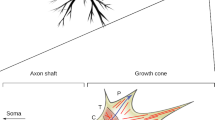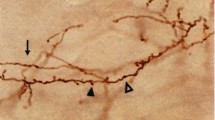Abstract.
Classical receptive fields (cRF) increase in size from the retina to higher visual centers. The present work shows how temporal properties, in particular lateral spike velocity and spike input correlation, can affect cRF size and position without visual experience. We demonstrate how these properties are related to the spatial range of cortical synchronization if Hebbian learning dominates early development. For this, a largely reduced model of two successive levels of the visual cortex is developed (e.g., areas V1 and V2). It consists of retinotopic networks of spiking neurons with constant spike velocity in lateral connections. Feedforward connections between level 1 and 2 are additive and determine cRF size and shape, while lateral connections within level 1 are modulatory and affect the cortical range of synchronization. Input during development is mimicked by spike trains with spatially homogeneous properties and a confined temporal correlation width. During learning, the homogeneous lateral coupling shrinks to limited coupling structures defining synchronization and related association fields (AF). The size of level-1 synchronization fields determines the lateral coupling range of developing level-1-to-2 connections and, thus, the size of level-2 cRFs, even if the feedforward connections have distance-independent delays. AFs and cRFs increase with spike velocity in the lateral network and temporal correlation width of the input. Our results suggest that AF size of V1 and cRF size of V2 neurons are confined during learning by the temporal width of input correlations and the spike velocity in lateral connections without the need of visual experience. During learning from visual experience, a similar influence of AF size on the cRF size may be operative at successive levels of processing, including other parts of the visual system.
Similar content being viewed by others
Author information
Authors and Affiliations
Additional information
Received: 19 November 1999 / Accepted in revised form: 14 April 2000
Rights and permissions
About this article
Cite this article
Saam, M., Eckhorn, R. Lateral spike conduction velocity in the visual cortex affects spatial range of synchronization and receptive field size without visual experience: a learning model with spiking neurons. Biol Cybern 83, L1–L9 (2000). https://doi.org/10.1007/PL00022918
Issue Date:
DOI: https://doi.org/10.1007/PL00022918




